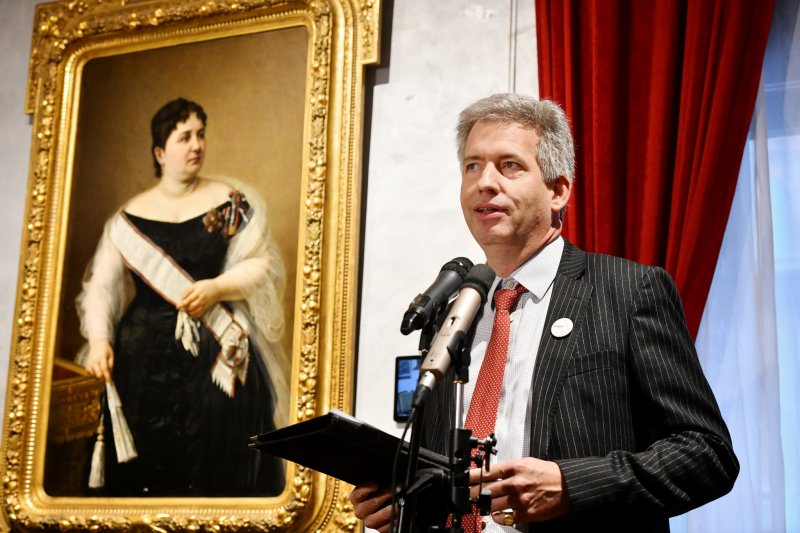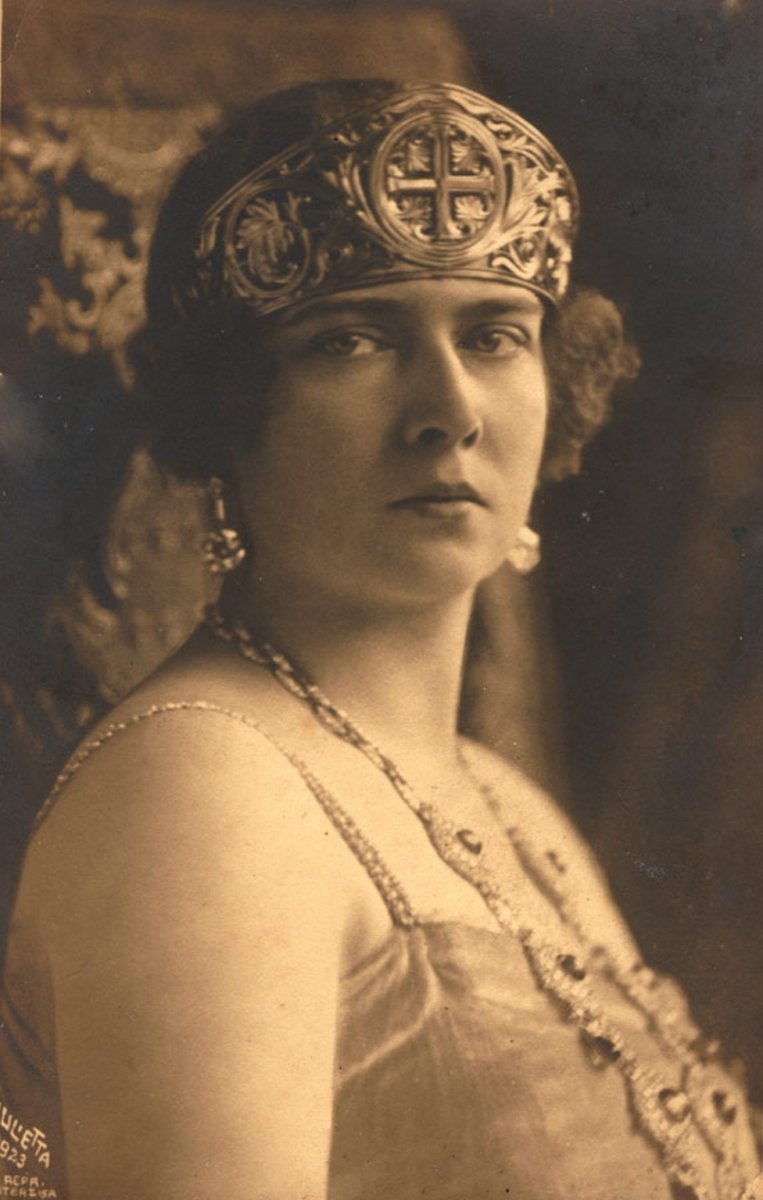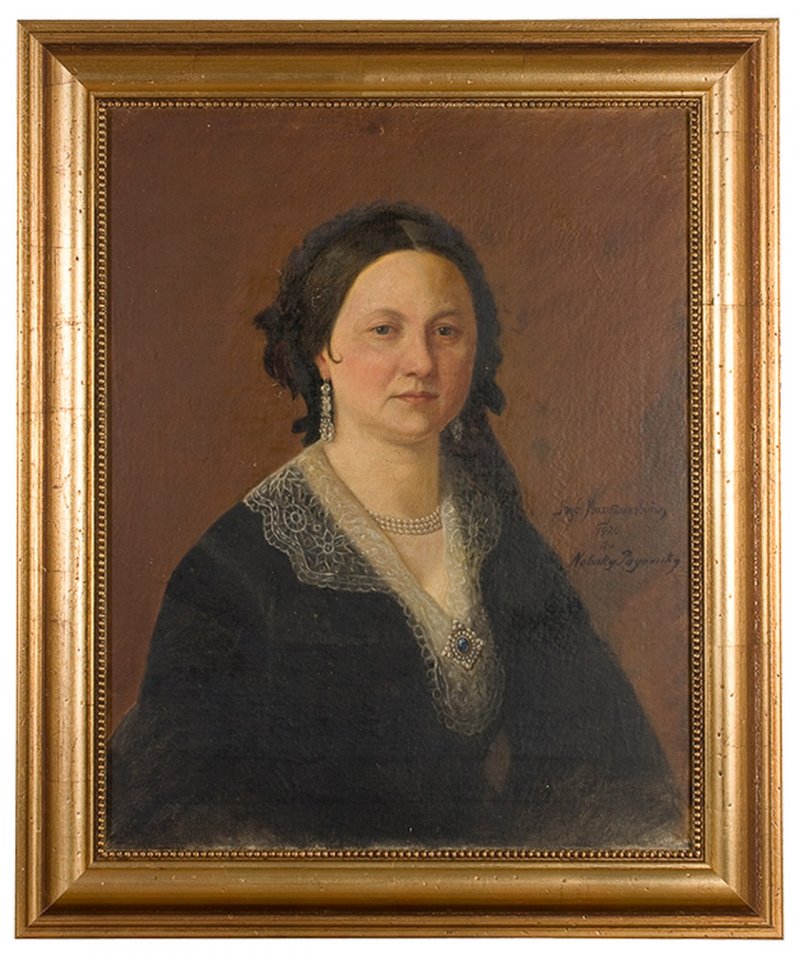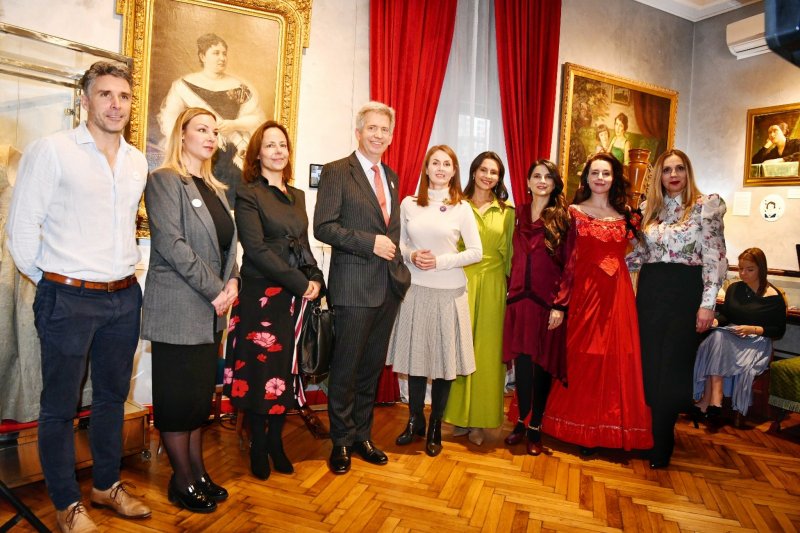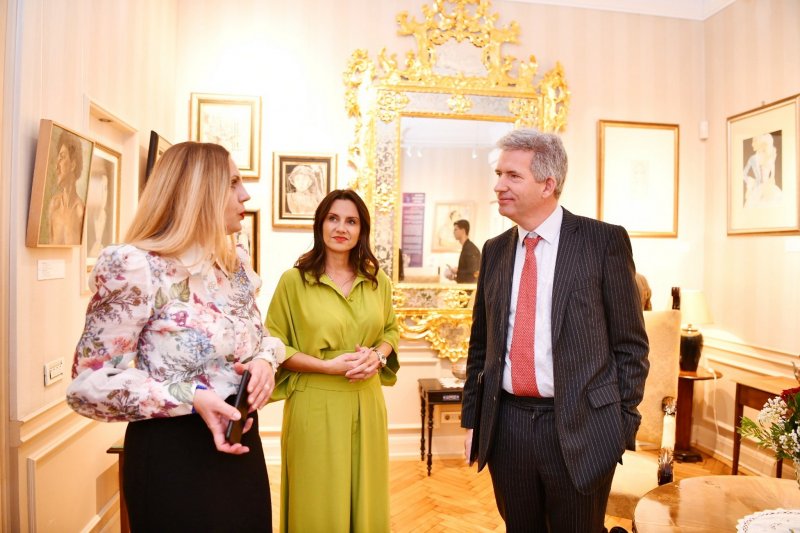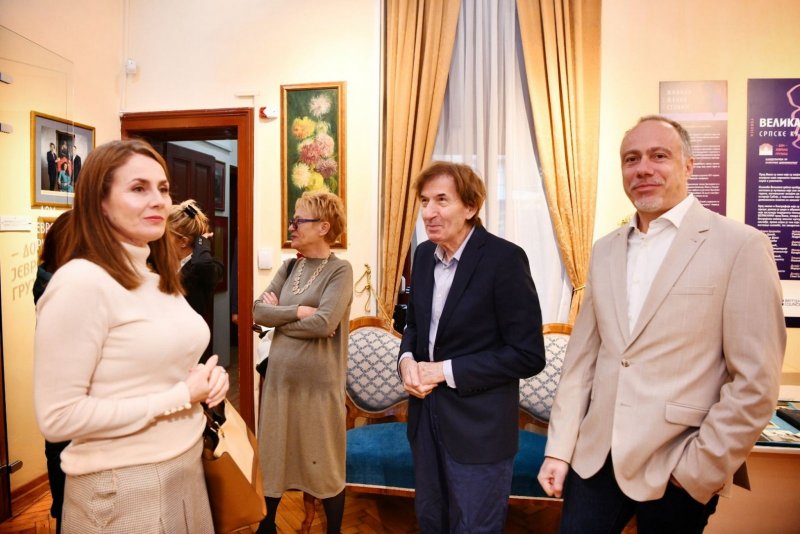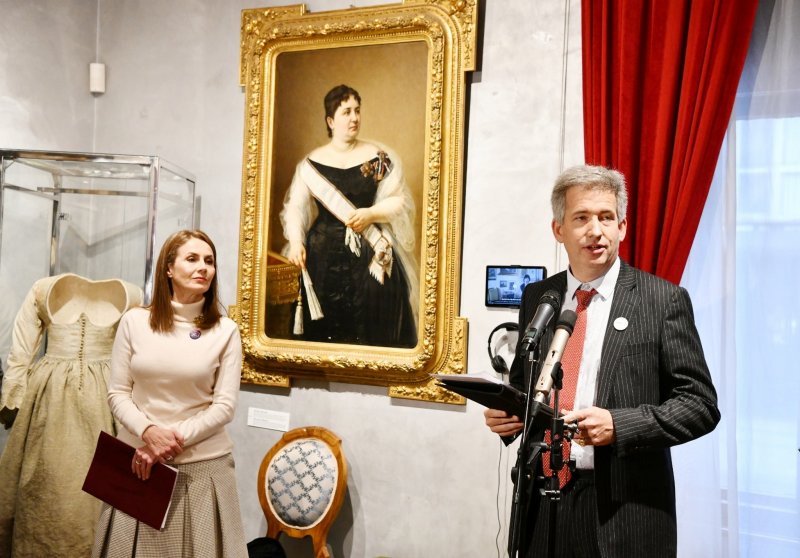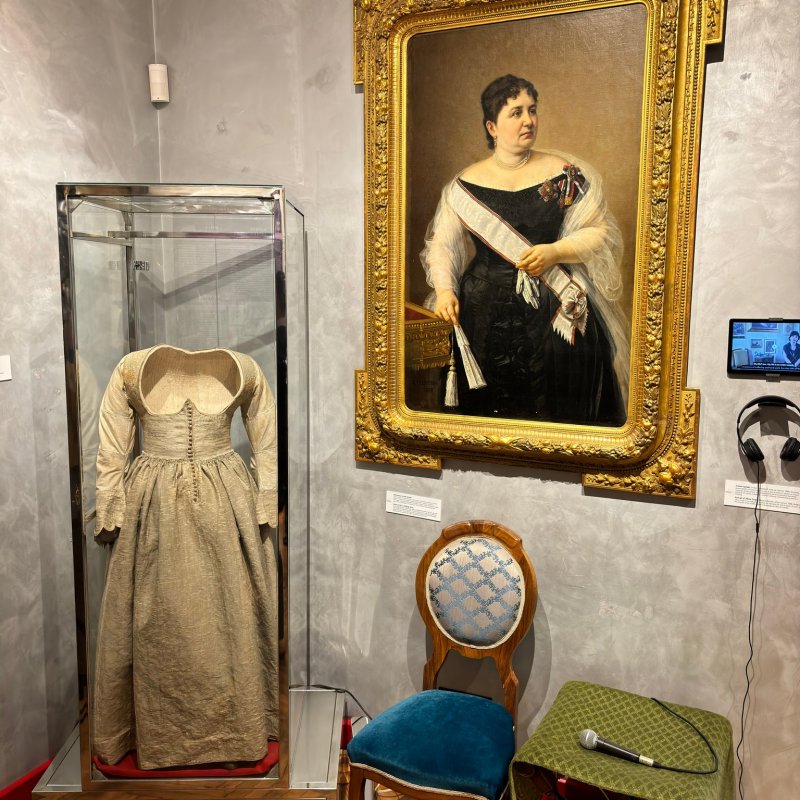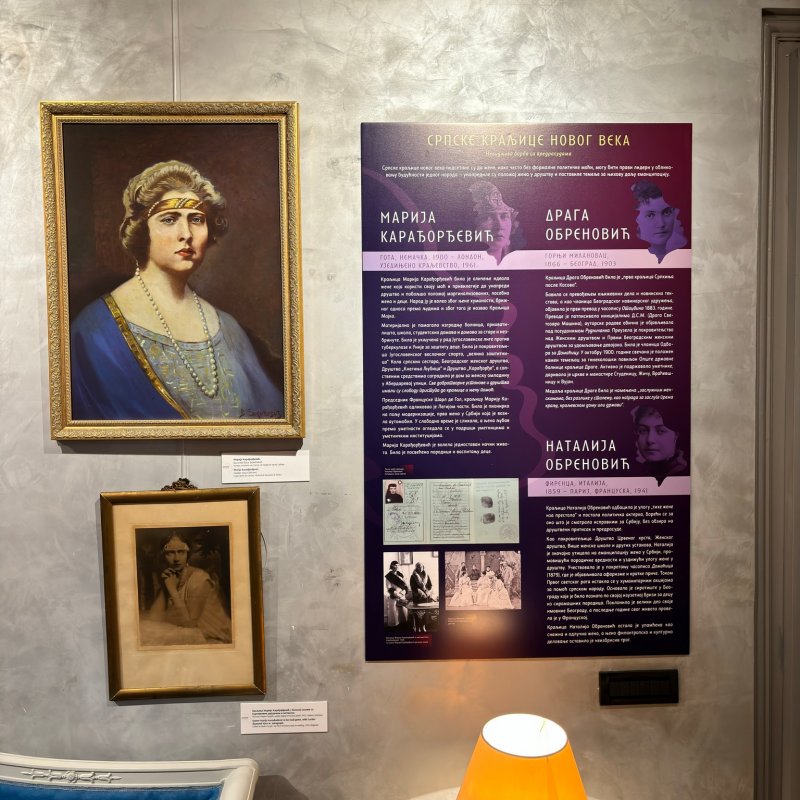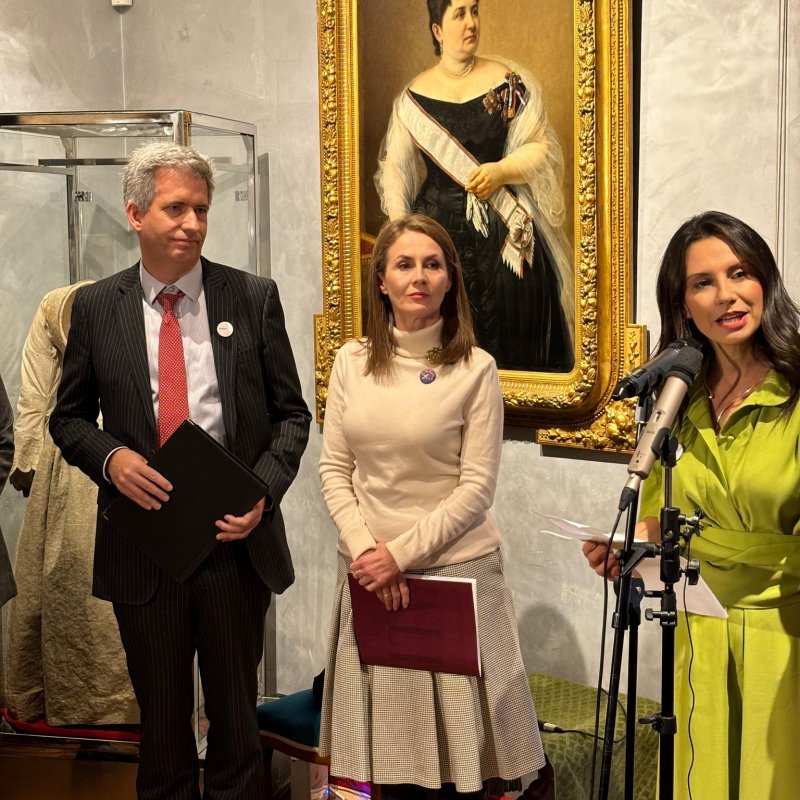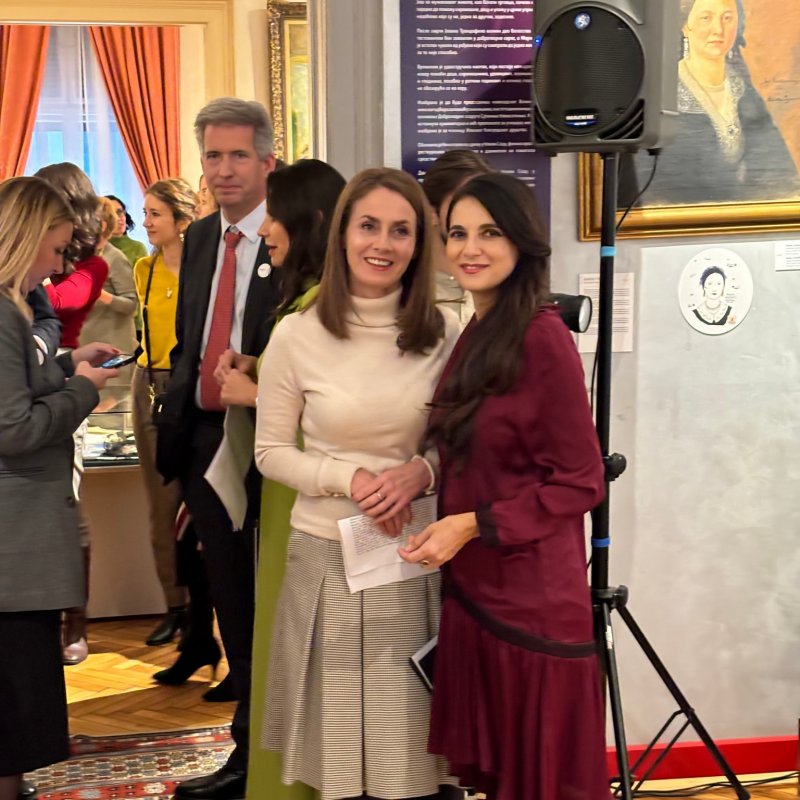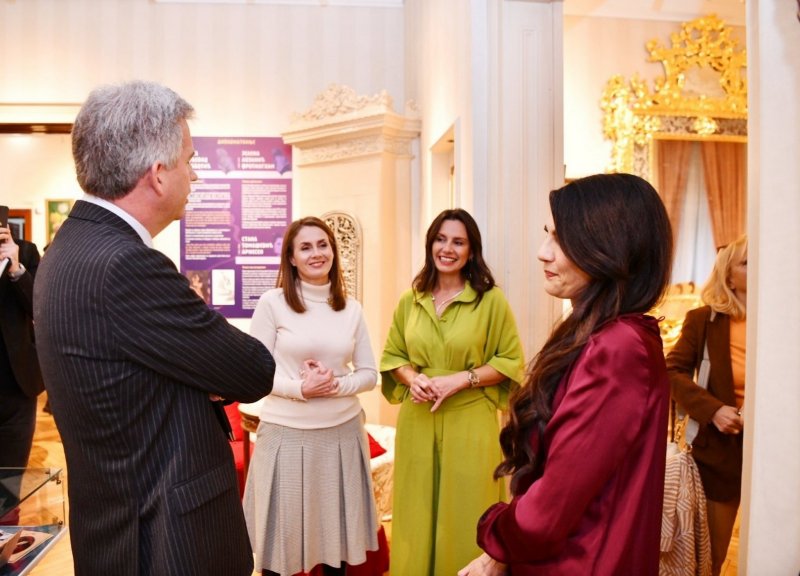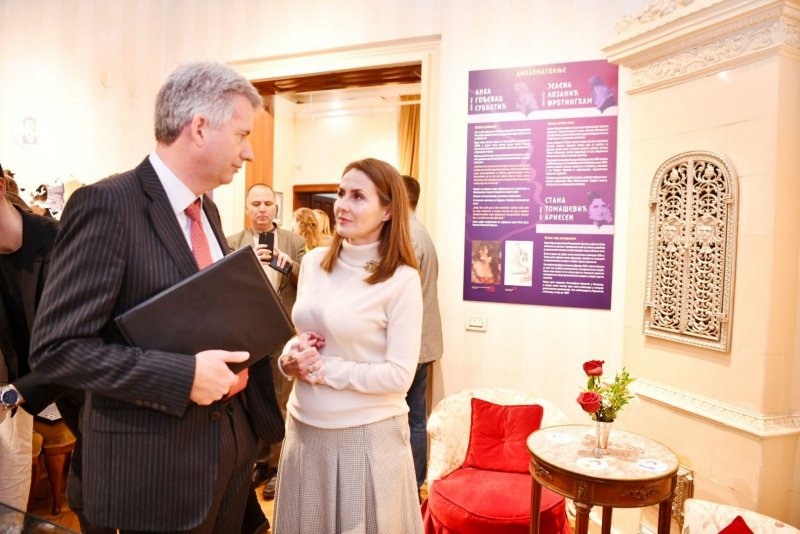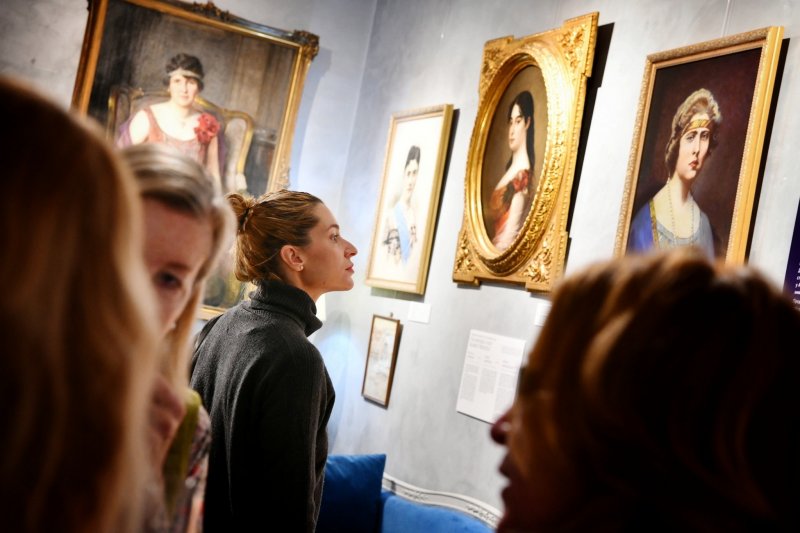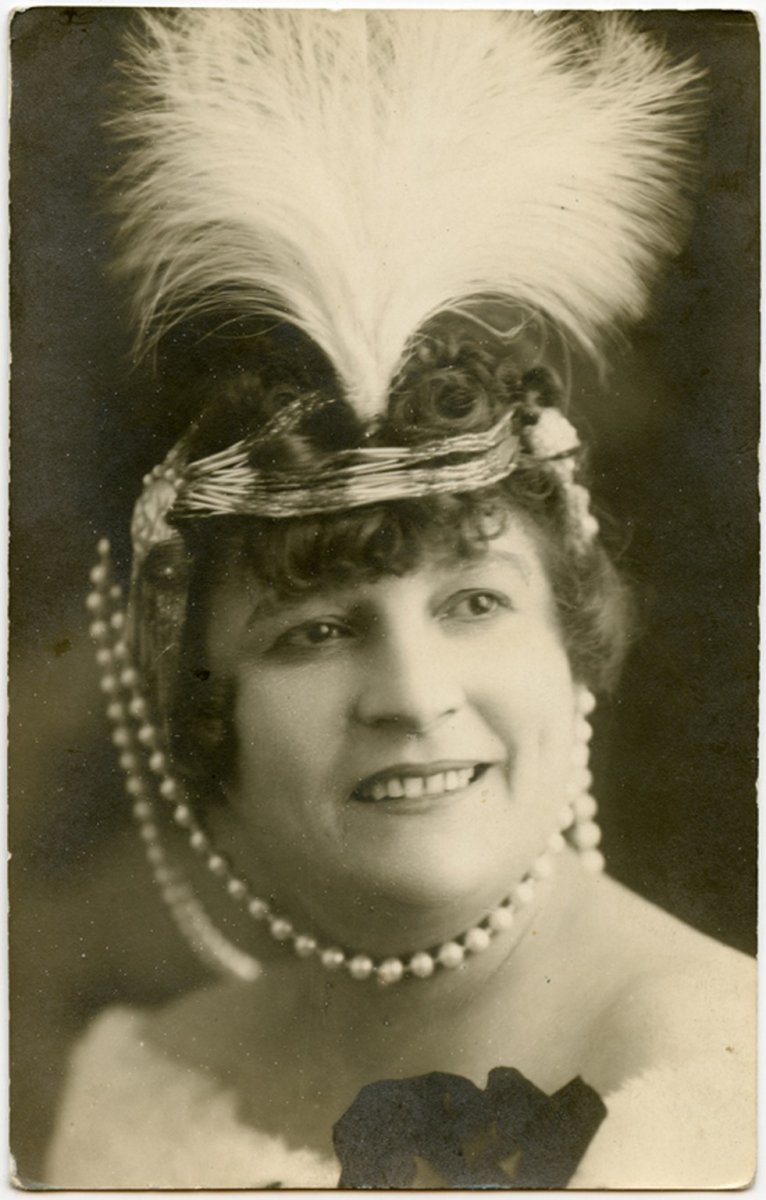“Great women of Serbian culture and science, to whom our exhibition is dedicated, challenged by many, who stood in their way and tried to discourage, marginalize and push them aside – where, according to their belief, a woman belongs. These women did not agree to that, and despite all the obstacles and setbacks, they changed both themselves and society, said the Commissioner for the Protection of Equality, Brankica Janković, at the opening of the exhibition “Great Women of Serbian Culture” at the Jevrem Grujić House in Belgrade.
With this exhibition, the Commissioner for the Protection of Equality, the House of Jevrem Grujić, and the Office for Cultural Diplomacy continue the second cycle dedicated to discovering and presenting notable women from Serbian history and culture. The exhibition’s patrons are the British Council and the British Embassy in Belgrade.
The exhibition was opened by H.E. Edward Ferguson, Ambassador of the United Kingdom of Great Britain and Northern Ireland to Serbia, and Commissioner for the Protection of Equality, Brankica Janković.
With the exhibition, we want to remind of these exceptional women and motivate young people, by leading them through the exhibition and accompanying workshops and discussions in the following months, to think critically, acquire new knowledge, and create an anti-discriminatory and anti-misogynistic cultural model. We want to create a cultural milieu that enables all boys and girls to reach their goals and realize their dreams, regardless of gender, skin color, religion, nationality, language, or disability, said Janković.
H.E. Edward Ferguson, Ambassador of the United Kingdom of Great Britain and Northern Ireland in Serbia, pointed out that brave women from Serbian and British history followed their noble ideals, even when society kept telling them it was not correct and acceptable. Women like Elsie Inglis, who left her comfortable life in Scotland and came to Serbia, founded fourteen hospitals and saved the lives of countless soldiers and civilians. “We often honor military leaders, scientists, and industrialists, and we don’t mention or appreciate how the great women changed the societies in which they produced and worked”, Ferguson said.
The authors of the exhibition are: Branka Conić, director of the Jevrem Grujić House, Dr. Gordana Bekčić, director of the Office for Cultural Diplomacy, Brankica Janković, Commissioner for the Protection of Equality, and Ružica Opačić, art historian.
“The great women we present are an example of courage, dedication, perseverance, and unshakable strength that, despite obstacles and stereotypes, anything can be achieved”, said Branka Conić, co-author of the exhibition and director of the Jevrem Grujić House.
Among the women we present in the new cycle of the project: “Great Women of Serbian Culture” are progressive painters – surrealists Milena Pavlović Barili and Zora Petrović, actress – Žanka Stokić, the first lady of the Serbian theater – Mira Trailović, first woman doctor of legal sciences – Anka Gođevac Subotić, humanitarians and benefactors – Delfa Ivanić, Ljubica Luković, Mirka and Mabel Grujić and Marija Trandafil, the first woman educated as costume designer – Milica Babić Jovanović, the first woman medical doctor – Draga Ljočić, the most educated Serbian woman and the first woman doctor of science – Ksenija Atanasijević, scientist – Jelka Bojkić Makavejev, professor – Ileana Čura, the world traveler – Jelena Dimitrijević, the first feminist – Draga Dejanović, but also the queens of the new century Natalija Obrenović, Draga Obrenović and Marija Karađorđević, who have indebted us with their cultural work and above all – charity.
In the company of famous Serbian women are also “Serbian English women” Lady Paget and Flora Sandes.
Collaborators in the exhibition are: Matica Srpska, Serbian Academy of Sciences and Arts (SANU), Milena Pavlović Barili Gallery, University Library “Svetozar Marković” Belgrade, Museum of the City of Belgrade, Museum of Theatrical Arts of Serbia, Museum of the Rudnica-Takovo Region, Circle of Serbian Sisters, “What a Woman”, Historical Museum of Serbia, Pavel Beljanski Memorial Collection, National Library of Serbia, Šamac Cultural Center, Vuk Karadžić National Library Kragujevac, Museum of the National Theater in Belgrade, “Adligat” Association and Torlak Institute.
The exhibition will be open until March 8, 2025.
